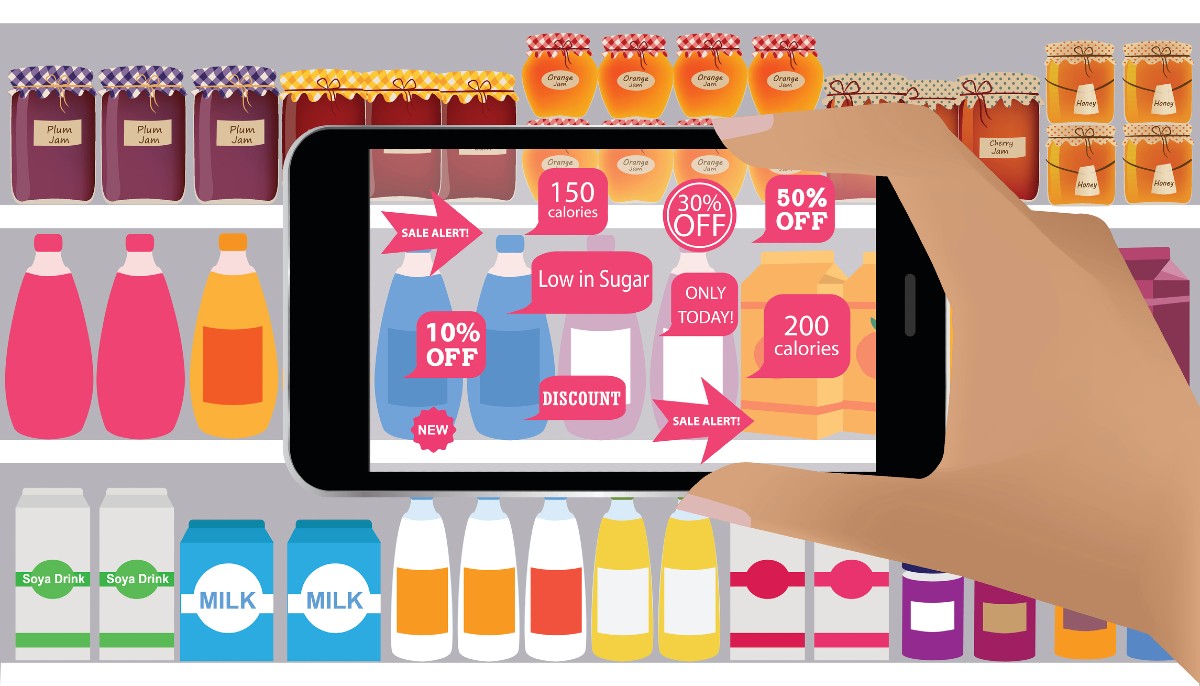COVID has sped up the adoption of contactless and digital technologies – and there’s no reason to assume retail will revert to pre-COVID conditions once the pandemic is over. Learn which digital technologies are reshaping the future of retail.
Before Winter/Spring 2020, digitalization was on most retailers’ radar, but it wasn’t pressing. Fast forward a month or two, and digital retail was everywhere: stores were scrambling to offer contactless shopping, app-based ordering, touchless delivery, etc.
The in-store shopping experience that had been so mundane was now a focus for fear and anxiety. Retailers rushed to communicate their empathy and concern for customers while simultaneously developing or accelerating their digital shopping strategies. Within a short time, the following moved from fringe to mainstream:
- Employee-only “dark stores” that act as order fulfilment centers.
- Curbside/contactless pickup.
- Shopping online for daily needs (i.e. groceries).
Additionally, online ordering has become the primary shopping method for many customers. And there’s no reason to think things will revert entirely back to the old retail environment once the pandemic finally passes; a survey by Namogoo revealed that 75% of those surveyed expect to carry on their online shopping habits, while a CommerceHub study showed that 59% are likely to keep using curbside pickup post-COVID.
For retailers, this means it’s time to double down on digital – and, more specifically, the technology that makes digital retail possible and profitable. Let’s look at six areas where the digital revolution has shaped retail for good.
How COVID Accelerated Tech in Six Key Areas
This is not to imply that our days of physical shopping are coming to an end. On the contrary; some of these digital revolutions are happening inside the store itself. And the behind-the-scenes activities (business intelligence, supply chain, inventory management, etc.) are changing, too.
1. Supply Chain
Using AI and machine learning (ML) not only helps companies toughen their supply chains against the effects of the COVID-19 pandemic, it also will be imperative for the post-COVID future. Incorporating information from the entire ecosystem, AI can identify weak areas, provide real-time insights, develop more accurate forecasts, reduce expenses, and increase efficiency.
2. Returns Optimization
After COVID, we can expect to see a surge in product returns – and, correspondingly, an emphasis on returns optimization. This will call for AI-enhanced versions of existing tools and will require retailers to understand the potential risks and how to mitigate them.
3. Fulfilment and Delivery
As mentioned above, many consumers expect to continue using curbside pickup options. Thus, fulfilment optimizers (e.g. that allow grocery stores to efficiently pick customer orders) will gain in importance; look for technology that monitors and restocks inventory to be used alongside picking algorithms. Incidentally, these systems can also help track variations in SKU and price movements.
4. Omnichannel Experience
Omnichannel was big prior to COVID, but with so many more people regularly shopping via website or app, an integrated experience across channels has become a must. But there is more than just the customer’s user experience in play; a true omnichannel strategy includes enterprise-wide inventory management. Warehouse efficiency is also part of this; AI and robotics can boost that, as well.
5. Business Intelligence
As you can see in the two prior items, solutions that work across an entire organization will be critical to retail in the coming months and years. Business Intelligence tools – which some retailers are already using to provide near-real-time data for shipments and inventories, among other things – are a natural continuation of this theme. They can serve as a single, organization-wide source of truth, providing clarity for decision-makers and leaders as they develop flexible ways to meet customers’ needs.
6. Contactless Shopping and Payments
Checkout-free, minimal contact shopping experiences have already been introduced in a very limited way (think Amazon Go stores). Contact-free payment has been around for a several years; now, though, we’re seeing a definite uptick in interest around it.
Essentially, contactless shopping breaks down into two camps:
- Scan-and-go – A customer scans items with their smartphone, places them in their shopping cart, bags them, and scans a QR code at a self-checkout to pay.
- AI Computer Vision (AICV) – A customer scans their store app as they walk into a store, picks out their groceries, and leaves; cameras and weight sensors identify what the customer has purchased, and the customer is automatically billed.
COVID has brought the sanitary aspect of such methods into high relief, but they are also very convenient for the customer; we can expect to see them grow after the pandemic has waned.
Does Post-COVID Life Mean Resuming the Old Normal?
In many ways, people are looking forward to getting back to their ‘old/normal lives’. But retailers have to consider whether all the technological changes brought about by COVID are inherently negative. In many cases, they’re simply extensions or accelerations of things that were already in the works. Thus, we see that retailers who look at the COVID situation as an opportunity for change and growth are the ones that are more likely to survive. Transforming your organization for the future will include leveraging technology, embracing AI and digital, and optimizing supply chain and in-store capabilities.
So, retailers, now’s the time to start preparing for the future. Let’s work together to address the challenges posed by COVID – we’ll be using these techniques and technologies once the pandemic has passed.
Related Absolutdata products and services: AI & Data Sciences, NAVIK AI Platform, Marketing Analytics































